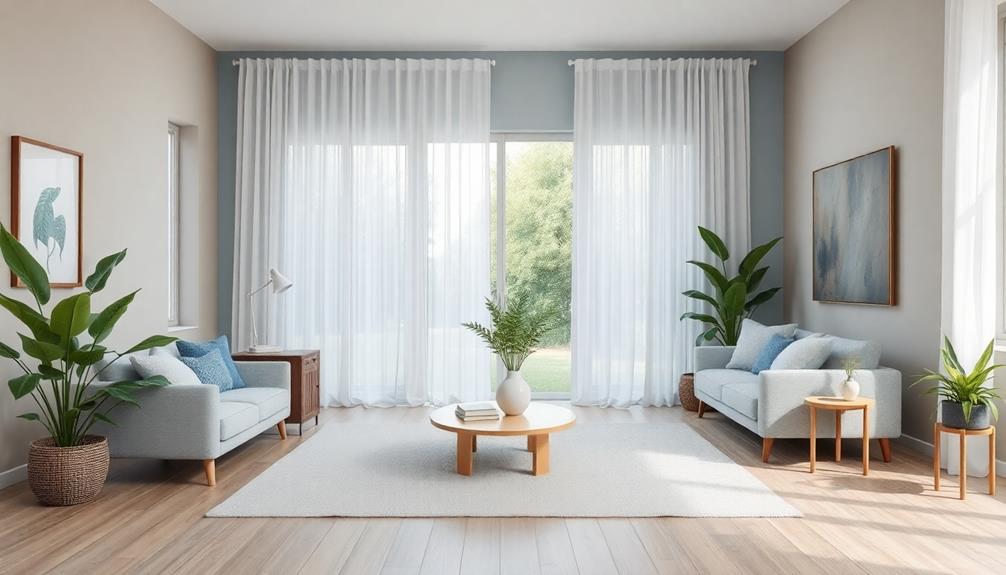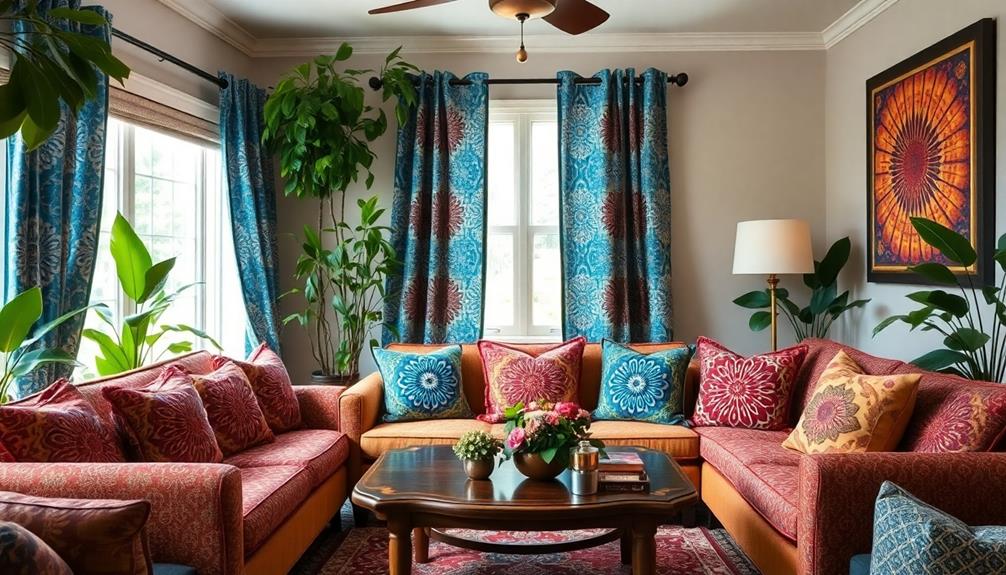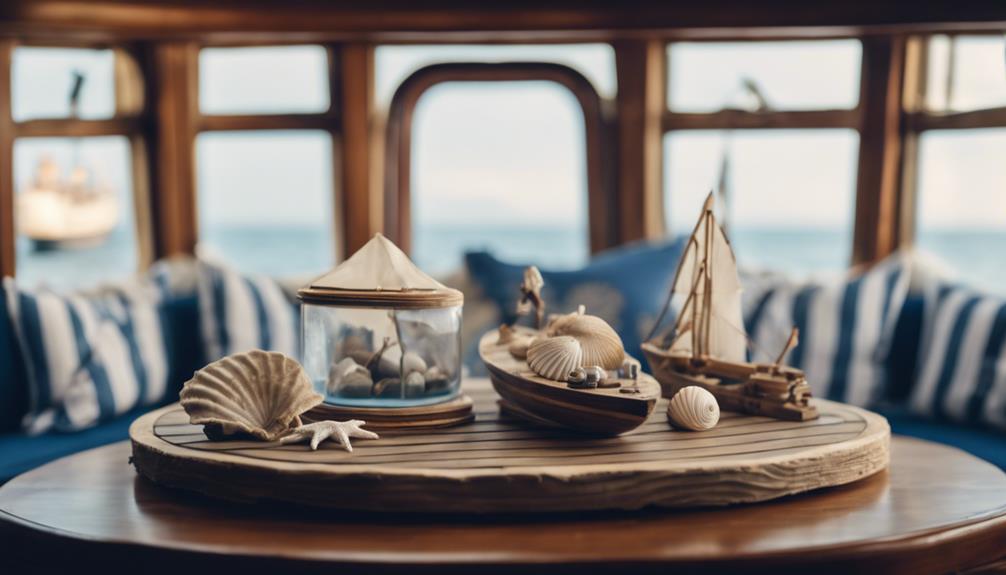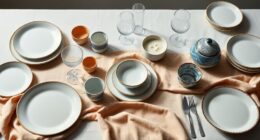Feng Shui colors can transform any room by enhancing the flow of energy and creating a peaceful atmosphere. Each color corresponds to the five elements, influencing your emotions and well-being. For example, calming blues and greens can help you relax, while vibrant reds ignite energy. By strategically using colors according to the Bagua map, you'll promote balance in specific areas of your life. Mixing natural materials like wood can enhance tranquility, while periodically reassessing your color scheme guarantees continued harmony. If you're curious about optimizing your spaces, there's much more to explore in this fascinating practice.
Key Takeaways
- Utilize calming colors like soft blues and greens in bedrooms to promote relaxation and restful sleep.
- Incorporate warm colors such as yellow and orange in kitchens to stimulate energy and enhance creativity.
- Apply earth tones combined with fire element accents in living rooms to create a comfortable and inviting atmosphere.
- Use the Bagua map to strategically place colors that enhance specific life areas, ensuring a harmonious environment.
- Regularly reassess and adjust color schemes to maintain balance and support emotional well-being in your space.
Importance of Color in Feng Shui

Color plays an essential role in Feng Shui because it directly influences the flow of energy, or Qi, in your space. By thoughtfully selecting colors, you can create an environment that promotes balance and harmony, improving your emotional and physical well-being.
Each color corresponds to one of the five elements of Feng Shui: earth, metal, water, wood, and fire. For instance, incorporating blue and black, which represent water, can foster calmness and concentration, while red, linked to fire, can energize and stimulate passion. Additionally, incorporating vibrant elements like Indonesian decorative pillows can enhance the aesthetic appeal and cultural richness of your space.
Using the Bagua map, you can strategically apply colors to enhance specific areas of your life. For example, placing green in the family area encourages growth and connection, while yellow in the center of your home promotes stability and warmth.
Understanding the emotional meanings of colors helps you create a peaceful atmosphere that resonates with your personal aspirations. By embracing the importance of color in Feng Shui, you can transform your space into a sanctuary that nurtures your well-being and reflects your desires.
Emotional Associations of Colors
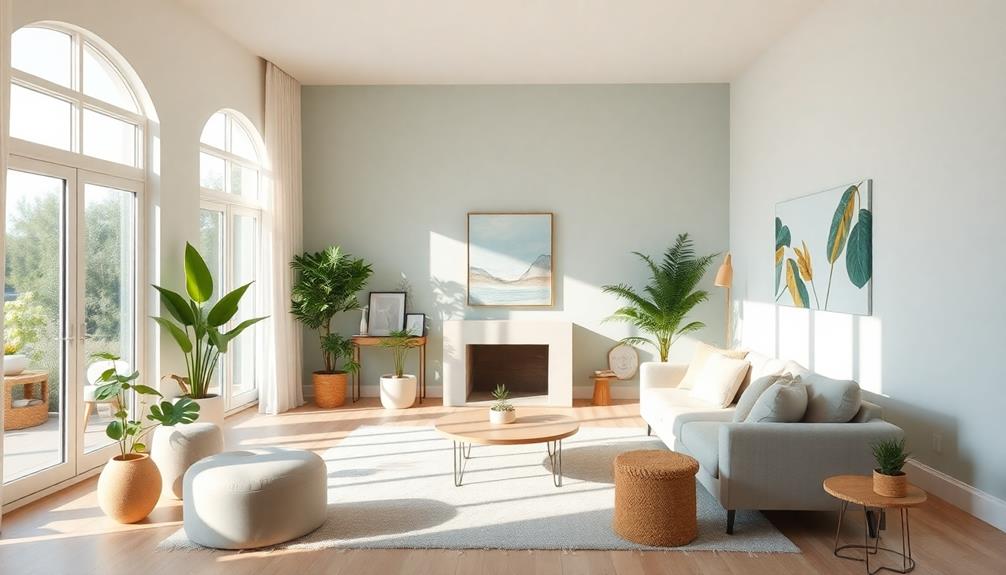
Choosing the right shades for your space can greatly impact your emotions and overall mood. In the world of Feng Shui, understanding the emotional responses tied to colors is essential for creating a balanced home.
For instance, if you want to ignite energy in your living room, consider using red, the color of passion. It stimulates excitement and liveliness but can be overwhelming if overused. Incorporating elements like traditional artistry from Indonesian decor masks can also enhance the vibrancy of your space.
On the other hand, blue promotes calmness and tranquility, perfect for spaces meant for relaxation. Green symbolizes growth and healing, making it an excellent choice for rejuvenating areas. If you're looking to enhance creativity and positivity, yellow is a fantastic option, brightening up kitchens and dining rooms.
For more introspective spaces like offices or meditation rooms, purple can inspire spirituality and prosperity.
Practical Color Applications for Rooms

Incorporating specific colors in your rooms can greatly enhance their functionality and emotional energy. When decorating bedrooms, consider using calming colors like soft blues and greens, which align with Feng Shui principles and promote relaxation and improving sleep quality.
To further enhance tranquility, you might also integrate natural materials, such as bamboo and wood, which create a soothing atmosphere Balinese design characteristics. For vibrant spaces like kitchens and dining areas, warm colors such as yellow and orange stimulate energy and appetite, creating a lively atmosphere for social interaction.
In your living rooms, aim for balance by mixing earth tones like browns and beiges with accent colors from the fire element, such as red. This combination encourages comfort without causing overstimulation.
Utilize the bagua map to pinpoint the best color placements for each room, ensuring that the colors in your home correspond to the desired emotional energy and functionality of the space.
Incorporating natural elements through your color choices, like greens and browns, can create a grounding effect, enhancing your connection with nature.
Balancing Colors and Elements
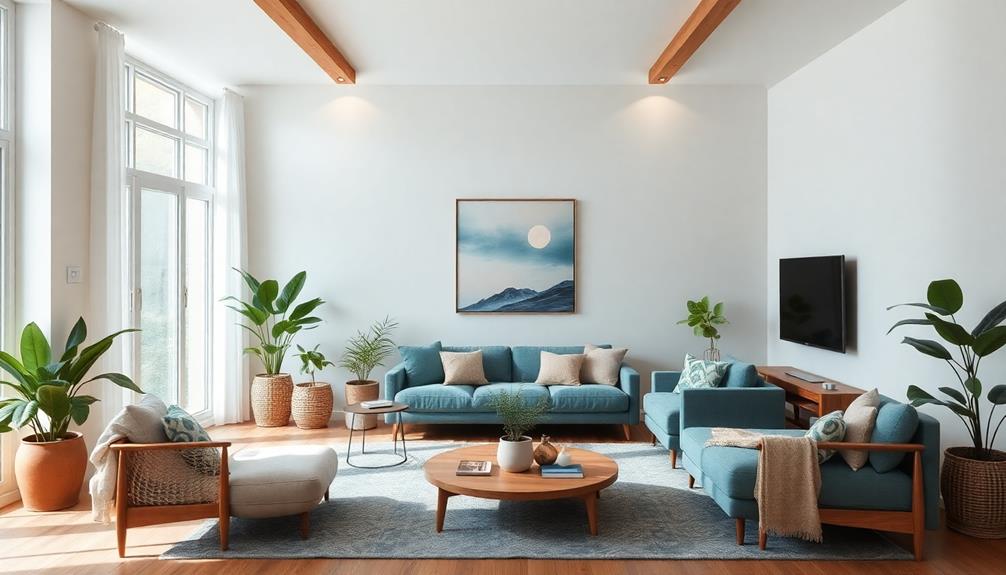
Achieving harmony in your space involves understanding how colors connect with the five Feng Shui elements—earth, metal, water, wood, and fire. By incorporating specific colors, you can create a balanced and harmonious environment. For instance, use earth tones like yellow and brown to promote stability, while red accents can energize your room.
Additionally, integrating natural materials like wood and stone can further enhance the connection to nature, reflecting a traditional Indonesian style in your decor.
Balancing colors is essential for supporting emotional well-being and enhancing energetic flow. Mindfully mix and match colors to guarantee each element is present in your space. The bagua map can be a helpful guide, aligning colors with specific intentions such as wealth, relationships, or health.
Regularly reassessing your color in Feng Shui can maintain that sense of peace and balance. Colors can notably influence mood and energy, so rejuvenating your schemes can be beneficial.
Whether you're incorporating green and blue for wood or black for water, keep in mind the impact on your overall atmosphere. By understanding the relationship between colors and elements, you empower yourself to create a nurturing sanctuary that promotes harmony and well-being in your life.
Creating Harmony Through Layout

How can you create a harmonious layout that promotes positive energy flow in your space? By applying the ancient practice of Feng Shui, you can enhance the art of placement in your living room. Start by arranging furniture to facilitate smooth energy flow (Qi) and avoid blocked pathways, which promotes accessibility and movement.
Consider creating distinct zones for relaxation, conversation, and work. This not only defines purposes within your space but also enhances functionality. Multi-functional furniture is ideal for smaller rooms, optimizing your area while supporting diverse activities.
Using area rugs can help visually define different spaces, adding warmth and intimacy to your seating arrangements. Regularly reassess your layout based on changes in energy and personal needs to guarantee your environment remains supportive and harmonious.
Here's a quick guide to help you maintain balance:
| Zone | Purpose | Furniture Ideas |
|---|---|---|
| Relaxation | Rest and unwind | Comfortable sofas |
| Conversation | Social interaction | Chairs and coffee tables |
| Work | Productivity | Desks and storage |
Implement these strategies to create harmony and enjoy a balanced living space.
Frequently Asked Questions
What Are the Calming Colors for Feng Shui?
Calming colors in Feng Shui include soft blues and greens, which promote tranquility. Neutrals like beige or soft grays provide grounding, while pastel shades like lavender blend calming and spiritual qualities, creating a peaceful atmosphere in your space.
What Colours Make a Room Feel Happy?
To make a room feel happy, choose bright colors like yellow and orange for energy, or soft hues like coral for warmth. Balancing these with neutrals helps create an inviting and cheerful atmosphere you'll love.
What Is the Best Color for a Bedroom Feng Shui?
For a bedroom, you'll want soft blues, greens, or neutrals to create a calming atmosphere. Incorporate earth tones for stability and consider the room's direction to enhance balance and tranquility in your space.
What Does Feng Shui Say About Colors?
You might think colors are just for decoration, but in Feng Shui, they shape your space's energy. Each hue influences mood, so choosing thoughtfully can transform your environment and elevate your emotional well-being.
Conclusion
As you explore the world of Feng Shui colors, you'll discover the subtle power they hold over your space and emotions. Imagine stepping into a room that feels perfectly balanced, where every hue resonates with harmony and peace. What if a simple change in color could transform your home into a sanctuary? Take a moment to experiment with these shades, and you might just reveal the tranquility you've been longing for—are you ready to embrace this colorful journey?
